Ideas for Dealing with Sensitivities with Sensory Processing Disorder
Affiliate and Referral links are used below to promote products I love and recommend. I receive a commission on any purchases made through these links. Please see my disclosure policy for more details. As an Amazon Associate, I earn from qualifying purchases.
I want to welcome and thank my mother-in-law, Debbie, a Certified Occupational Therapy Assistant, for all of her research and for sharing lots of great ideas on the topic of activities and ideas for dealing with sensitivities with Sensory Processing Disorder.
Before we get started, if you have concerns that your child may have sensory processing disorder (SPD), please consult your physician and ask for a referral to an Occupational Therapist.
These tips are not meant to replace medical advice from your trained local professionals. All children and people for that matter have sensory sensitivities. You may see some things listed below that your child does. This does not mean that they automatically have SPD.
These tips are helpful for all children dealing with sensory sensitivities. Again please consult your doctor/pediatrician and a local licensed and trained Occupational Therapist to assess your child for any concerns.
Vestibular Activities for Sensory Processing Disorder
The vestibular system is composed of structures in the inner ear that detect movement, balance, and changes in head positions.
Symptoms:
Hypersensitivity/Over-responsive
- Needs less input
- Fearful of heights
- Does not like their feet off ground
Hyposensitivity/under responsive
- Needs more input
- Craves spinning and swinging
- Has difficulty standing still
Solutions for Teachers
- Ball chair
- Wiggle cushion
- Partially inflated beach ball
- 2 tennis balls put on diagonal corners of a chair for rocking
- Movement breaks/brain breaks (see brain break ideas)
Solutions for Parents
- Jump on a trampoline or mini-trampoline
- Swinging
- Bike riding
- Yoga poses such as downward dog
Gaiam Kids Balance Ball Chair – Classic Children's Stability Ball Chair, Child Classroom Desk Seating, Blue/Green2 Pack – SueSport Air Inflated Stability Wobble Cushion, Balance Disc, Twist Massage, 14 Inch, RedLittle Tikes 3′ Trampoline
Proprioceptive Activities for Sensory Processing Disorder
We all know of a child, maybe he/she sat in front of you in school, or maybe it was you that the teacher was always yelling at to sit down or slow down. At play, this child may always be literally “bouncing off the walls” or falling down.
These children are seeking sensory input into their joints or muscles called proprioception, or knowing where your body is in space.
The proprioception system includes receptors in joints, muscles, and tendons perceive contraction, stretching and compression.
For more information on the vestibular system read The Vestibular System and How it Affects Your Child's Behavior.
Symptoms:
- Poor coordination
- Difficulty grading amount of pressure in activities such as writing or throwing a ball.
Solutions for Parents & Teachers:
- Weight across the lap (DIY Weighted Lap Pad Tutorial)
- Bean bag chair to sit in
- Give yourself a hug
- Heavy work (heavy work activities ideas)
- Weighted Vest
- Swimming
- Karate
- Climbing
- Playing in a sandbox
- Cleaning (pushing the sweeper)
- Carrying groceries
- Chair push-ups
Fun and Function's Blue Weighted Compression VestBlue Weighted Vest – Steady Sensory Input to Calm and Focus – Stylish, Comfortable, Machine Washable – Small (Ages 2-3)Big Joe Bean Bag, 98-Inch, Radiant Orchid
Tactile Sensitivities with Sensory Processing Disorder
Have you ever experienced the tag on the back of your shirt that drove you crazy until you ripped it out or clothing that itched and irritated your skin?
People react differently to tactile sensations. My daughter cannot tolerate the feel of velvet on her skin. No velvety little Christmas dresses for her. I dislike the feel of wet sticky stuff, such a syrup, and sticky doughnuts.
These sensitivities can be very serious and be distracting for children with SPD.
The tactile system or touch includes cells in skin give us information about light touch, pain, temperature, and deep pressure touch.
Hypersensitivity:
- Tactile defensive
- Bothered by tags in clothes, glue on fingers, finger painting
Hyposensitivity:
- Craves input
- Wants to touch everything, walls, other children, etc.
Solutions for Parents and Teachers
- Hand fidgets
- Vary media used at sensory tables,
- Put finger paint in plastic bag and have them paint from outside the bag by moving the paint around in the bag with their fingers
- Tag-less clothing
- Massage scalp before haircuts
- Weighted vest at dentist (x-ray vest)
- Cutting nails-soak in warm water first, press on nail bed before cutting
- T-shirt sheets on bed and snug pj's
- Pets to hold and pet
- Exercise: close eyes and reach into a bag to describe objects by shape, size, and texture.
Oral/Taste Activities for Sensory Processing Disorder
I am guilty of chewing on my cheeks, I had a friend that as an adult was still chewing on pencils or pens. My daughter hated brushing her teeth as a small child, she claimed mostly because of the taste. These are all symptoms of oral sensitivities.
Taste/Oral Sensitivities
- Sensitive to brushing teeth
- Sensitive to food textures
- Mouthing non-food objects and exploring textures such as chewing on pencils, clothing etc. – remember this is age appropriate for young babies and toddlers.
SOLUTIONS FOR PARENTS AND TEACHERS
Teachers:
- Allow chewing gum during breaks
- Non-edible chewing items (suggested reading: Why Your Sensory Child Chews & What You Can Do to Help)
Parents:
- Encourage a variety of food and textures (visit www.YourKidsTable.com for more sensory related food questions)
- Vibrating toothbrush
- Use a straw to drink liquids (water or a thick smoothie)
Olfactory/Smell Activities for Sensory Processing Disorder
The olfactory system includes chemical receptors with direct neuronal connections to the limbic system (responsible for emotional memory).
Symptoms:
- Hypersensitive to certain smells and avoids them
- Limited diet (gagging or avoiding)
- Explores objects by smelling
Solutions for Parents & Teachers:
- Scented playdough – calming scented play dough recipe
- Scented finger paint
- Scented markers
- Scented bath soaps and lotions
- Use smelling bottles (essential oils or spices)
Auditory Activities for Sensory Processing Disorder
Are you or someone you know easily distracted by background noises? Or work with a child that is always distracted by sounds and asking “what’s that?” all the time and not being able to focus on what they need to be doing? These could be symptoms of auditory sensory issues.
Hearing/interpreting, localize sounds, discriminating between sounds.
Symptoms:
- Sensitive to loud sudden sounds
- Distracted by background noises
Solutions for Parents and Teachers:
- Headphones or earplugs to block out background noises
- Simplify language when giving instructions to the class
- Give a verbal warning before loud sounds, like fire drills to cover ears.
- Therapeutic Listening programs.
Visual Activities for Sensory Processing Disorder
Visual sensitivities can prevent a child from focusing and completing a task. Visual sensitivities can affect acuity, ocular motor, visual motor, and visual perception.
Symptoms:
- Hypersensitivity
- Sensitive to sunlight or fluorescent lights
- Over distracted by classroom wall decorations
- Poor hand-eye coordination
- Difficulty tracking across a page while reading
- Difficulty copying from chalkboard
Solutions for teachers and parents:
- Decrease wall decorations to limit distractions
- Adjust light in classroom (cover fluorescent lights if possible)
- Use a Table Easel
- Window guide for reading
- Copy from page or book at close range instead of chalkboard
- Use colored overlays across pages while reading
- Using Wiki Stix around edge to provide tactile cues while coloring
- Place screen and monitors at proper height
- Play catch to help with eye-hand coordination
Would you like to get free printables for each of the sensory systems? Sign up for my 9-day sensory processing e-mail series and get more activity ideas plus free printables for each sensory system.
Need more ideas? Check out the resources below.

Heather Greutman, COTA
Heather Greutman is a Certified Occupational Therapy Assistant with experience in school-based OT services for preschool through high school. She uses her background to share child development tips, tools, and strategies for parents, educators, and therapists. She is the author of many ebooks including The Basics of Fine Motor Skills, and Basics of Pre-Writing Skills, and co-author of Sensory Processing Explained: A Handbook for Parents and Educators.

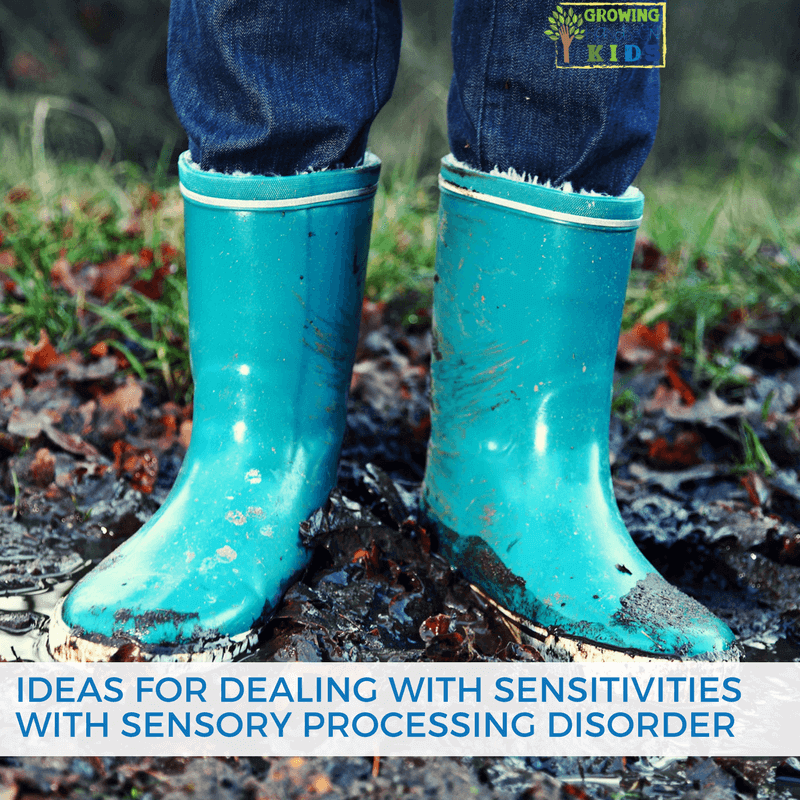
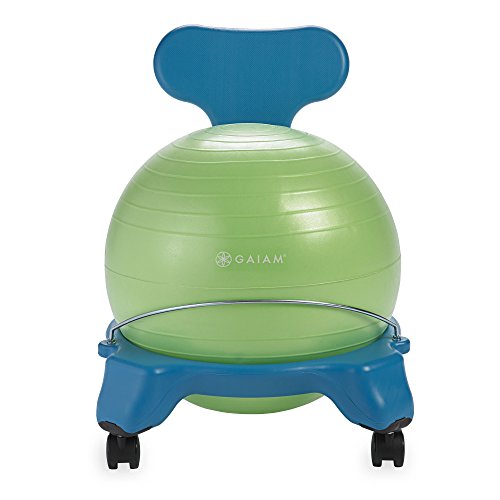






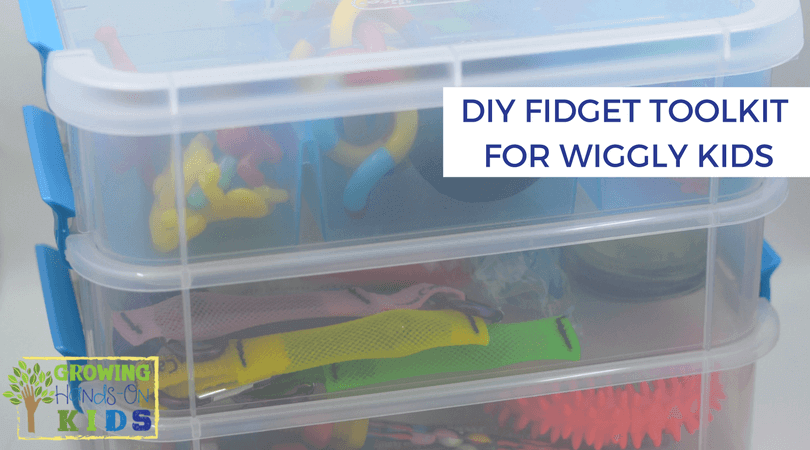
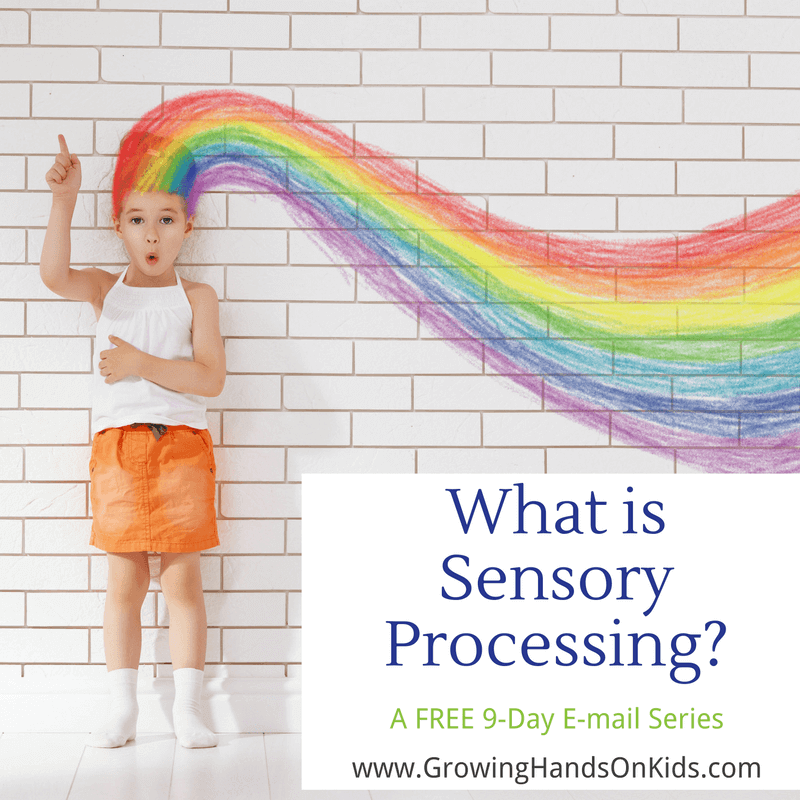
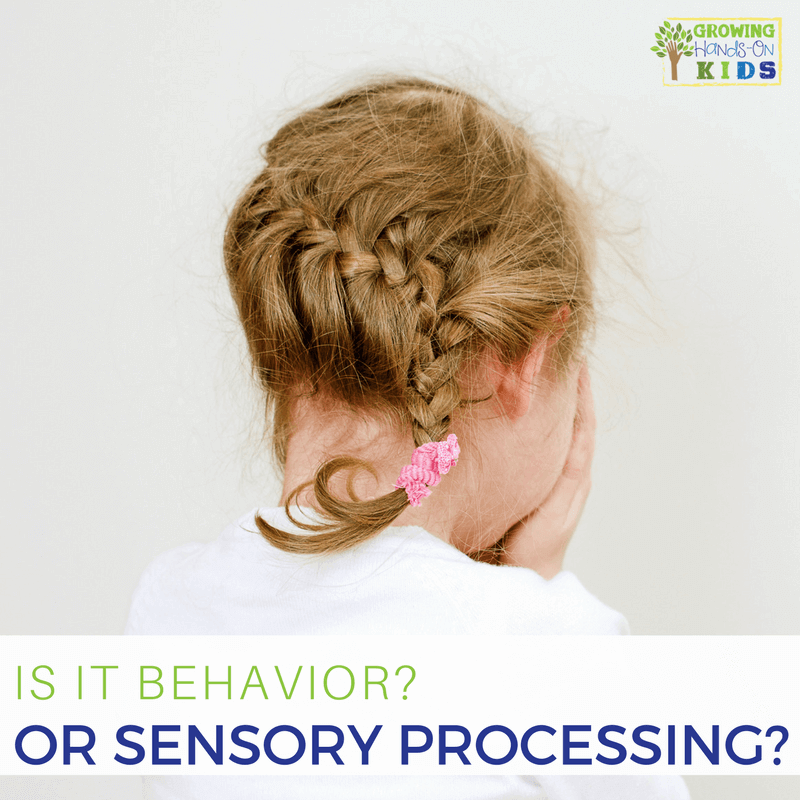
What can be done about hearing sensitivity?
Hi Judith,
I have a second post on the site linked to at the bottom of this one with ideas for hearing (auditory) sensitivity. Here is the link to it: https://www.growinghandsonkids.com/auditory-visual-hypersensitive-what-is-sensory-processing-disorder.html
I have a grandchild who has a lot ot sensory issues..one in particular hair..can not stand someone touching combing washing cutting her hair. .goes into major meltdown mode..screaming crying historically..how does one help her relieve the anxiety?
I don’t know her age but for combing, have you tried letting her do it? The website http://www.asensorylife.com might give you more ideas. Deep pressure massage her back and even massage her head before touching. Give her lots of warning as to what is happening. Role play combing, cutting and washing with a doll or stuffed animal. I cut my own children’s hair. They could never tolerate a hair salon. Hope this helps.
Great tips Lisa, thanks for sharing!
You could also try some different types of brushes that get through tangles easier than a typical brush or comb. Maybe she can brush a doll’s hair while you brush her hair, type of thing too.
This is so helpful and makes so much sense! My oldest son (6) definitely has hypo oral sensitivity.
Thank you so much for the helpful ideas!
So glad this was helpful for you Kristy!
This is such a succinct, useful, and well-organized list! Thank you for this.
You are very welcome!
You are welcome Linda! Glad it was helpful for you!